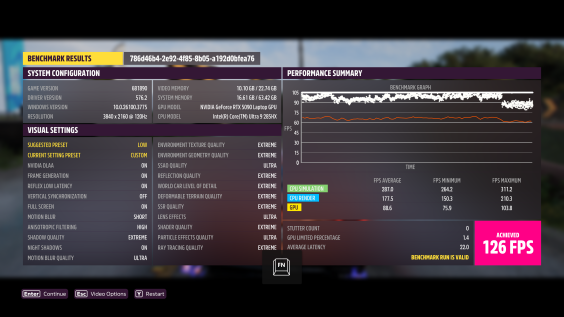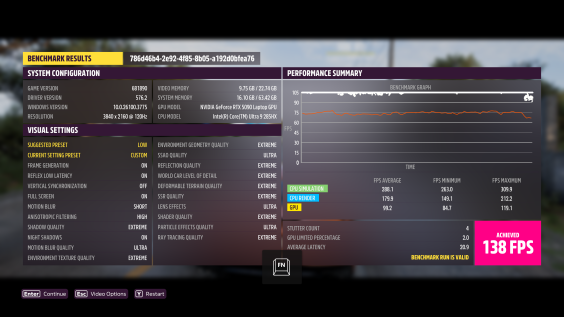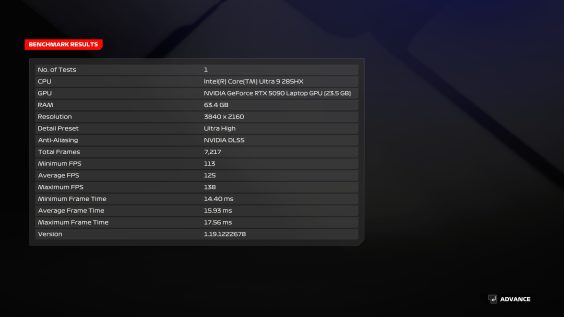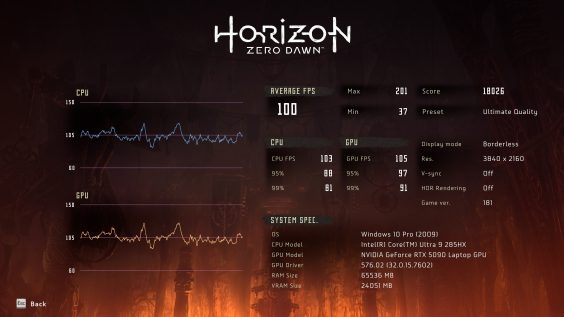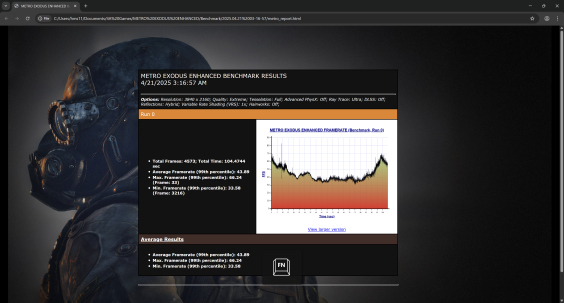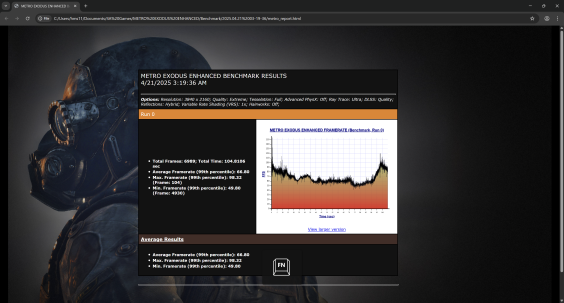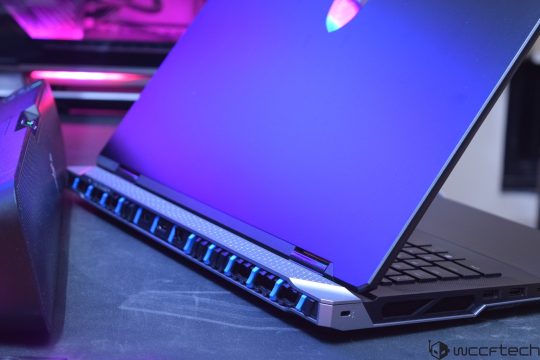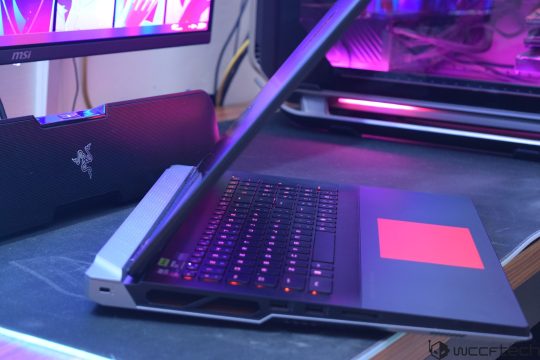MSI Titan 18 HX AI
2025
Type
Laptop
Price
$6699 US
At CES this year, both Intel and AMD announced their big guns for the laptop segment. The Blue Team lined up its Arrow Lake-HX family while the Red Team showed their Fire Range offerings. As of today, Intel is the first to have these laptops available on the market, and they are packing some insane performance.
Intel makes things simple by using the “HX” branding for its top-of-the-line, desktop-class mobile CPUs, while AMD’s “HX” branding is adopted by both mainstream chips, such as Strix Halo, and the true desktop-class offerings, the Dragon Range and Fire Range series. Both companies aim these behemoth platforms towards gaming, workstation, and prosumer use cases. With the emerging AI trend, we have also seen these high-end laptops being branded as AI-ready mobility workstations.
Many of those who have already seen or read the most recent reviews of desktop CPUs from Intel and AMD will find these “HX” platforms to offer very similar specs since they are more or less the same dies as the desktop parts. The only differences are that these chips are tuned to be efficient and come with lower TDPs for compatibility with laptops and their limited cooling capabilities. As much as high-end laptops get, they won’t be able to match a typical desktop PC in terms of cooling capabilities, so you are limited in how far you can push these things, and the same is true for the power requirements.
With that said, undervolting has shown us that even with reduced power input, modern day CPUs work really well and that is something we also saw in our Core Ultra 9 285H review which goes up to 45W at base and 115W at MTP while the chip we are testing today starts at 55W and can go as high as 200W.
To test out the new capabilities of Arrow Lake-HX on mobile, we were sent an MSI Titan 18 HX AI laptop decked out with the Core Ultra 9 285HX and the GeForce RTX 5090 by Intel.
MSI Titan 18 HX AI Laptop – Specifications At A Glance
In terms of specifications, the MSI Titan 18 HX AI laptop is equipped with the Core Ultra 9 285HX CPU. This is the flagship processor within the Arrow Lake-HX mobile lineup, which offers the same core specs as the desktop-grade Core Ultra 9 285K.
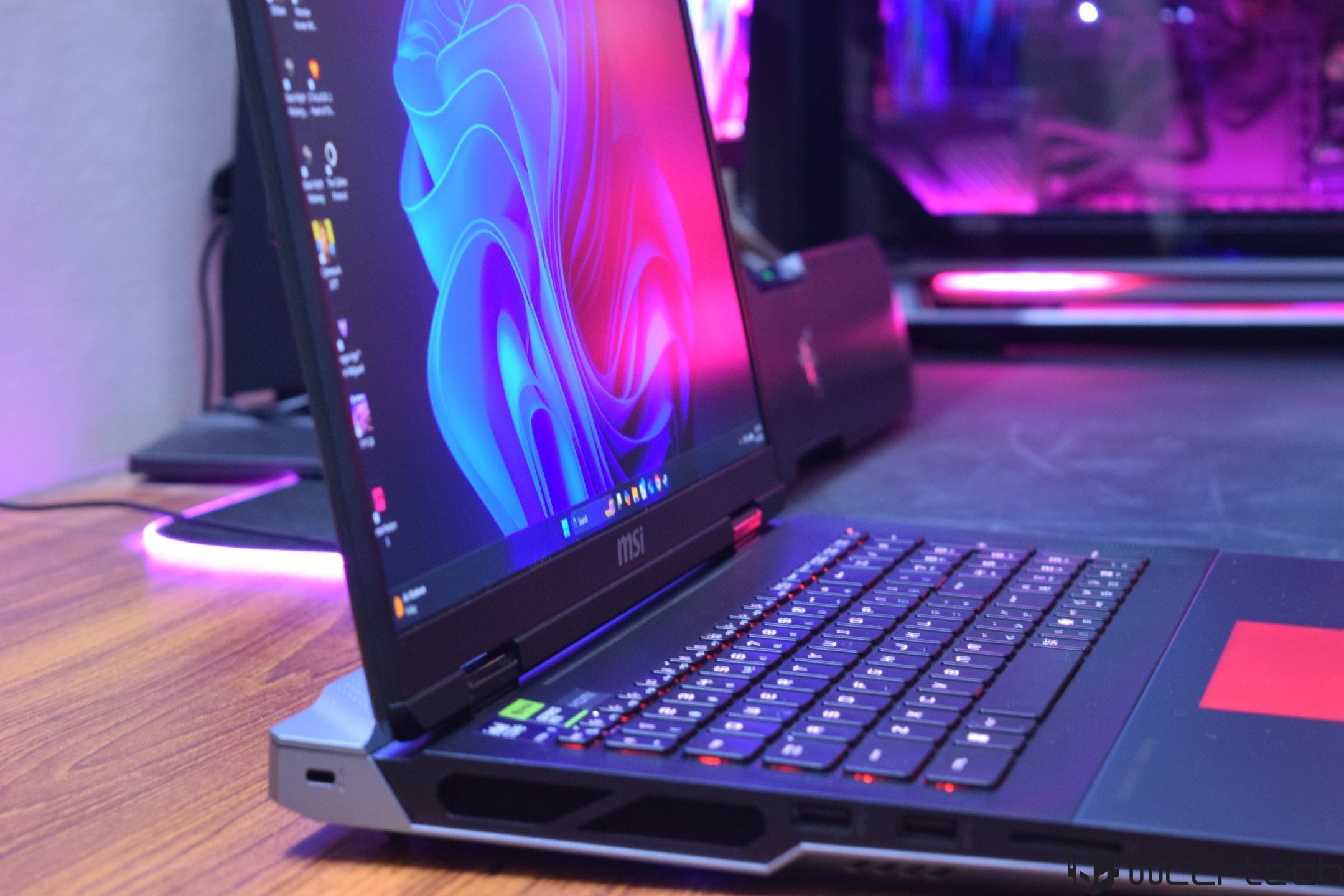
The Intel Core Ultra 9 285HX CPU features 24 cores in total with 24 threads. These are a combination of 8 P-Cores and 16 E-Cores. The CPU has a base frequency of 2.8 GHz and boosts up to 5.5 GHz on the P-Cores, while the E-Cores have a base frequency of 2.1 GHz and a boost frequency of 4.6 GHz.
The chip features a total of 76 MB cache (36 MB L3 + 40 MB L2) and has a TDP rating of 55W at the base and 160W MTP (Maximum Turbo Power). The chip can also be configured down to 45W as its minimum assured power rating (shouldn’t be mistaken with idle power), while the PL1 boost frequency can be configured up to 180W & PL2 to 220W on the Titan 18 HX AI laptop. This only works in extreme CPU use cases.
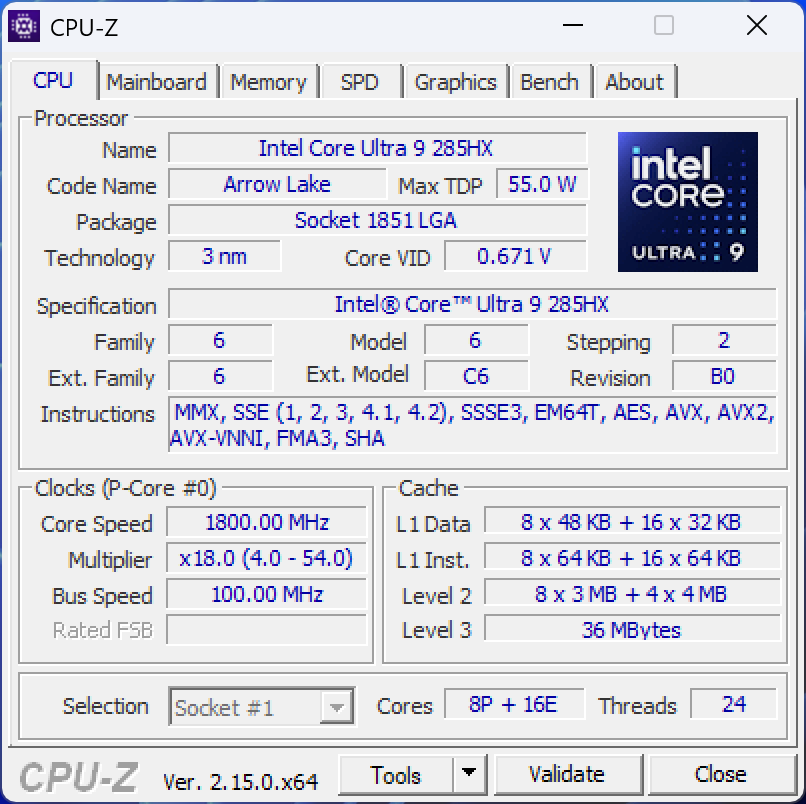
For the iGPU, Intel is using an Alchemist SKU with 4 Xe cores that clock up to 2.0 GHz and feature a maximum TOPS (INT8) rating of up to 8.

On the NPU side, the Intel Core Ultra 9 285HX is equipped with an updated NPU2.7, which offers a peak TOPS (INT8) of 13 and supports all the latest AI frameworks such as OpenVINO, WindowsML, DirectML, ONNX RT & WebNN. Compared to Meteor Lake, which offers 11 TOPS, the 13 TOPS NPU comes in at a slight upgrade but Intel has stated in the past that offering the highest number of TOPS isn’t that important, what’s more important is to fully utilize the capabilities of the NPU and its available capabilities through software-centric optimizations.
Intel Core Ultra 200 “Arrow Lake” Laptop Lineup:
| CPU Name | Family | Cores / Threads | Boost Clock | Cache | TDP (Base/MTP) |
|---|---|---|---|---|---|
| Core Ultra 9 285HX | Arrow Lake-HX | 24/24 | 5.5 GHz | 36 MB | 55/160W |
| Core Ultra 9 275HX | Arrow Lake-HX | 24/24 | 5.4 GHz | 36 MB | 55/160W |
| Core Ultra 7 265HX | Arrow Lake-HX | 20/20 | 5.3 GHz | 30 MB | 55/160W |
| Core Ultra 7 255HX | Arrow Lake-HX | 20/20 | 5.2 GHz | 30 MB | 55/160W |
| Core Ultra 5 245HX | Arrow Lake-HX | 14/14 | 5.1 GHz | 24 MB | 55/160W |
| Core Ultra 5 235HX | Arrow Lake-HX | 14/14 | 5.1 GHz | 24 MB | 55/160W |
| Core Ultra 9 285H | Arrow Lake-H | 16/16 | 5.4 GHz | 24 MB | 28/115W |
| Core Ultra 7 265H | Arrow Lake-H | 16/16 | 5.3 GHz | 24 MB | 45/115W |
| Core Ultra 7 255H | Arrow Lake-H | 16/16 | 5.1 GHz | 24 MB | 28/115W |
| Core Ultra 5 235H | Arrow Lake-H | 14/14 | 5.0 GHz | 18 MB | 28/115W |
| Core Ultra 5 225H | Arrow Lake-H | 14/14 | 4.9 GHz | 18 MB | 28/115W |
| Core Ultra 7 265U | Arrow Lake-U | 12/14 | 5.3 GHz | 12 MB | 15/57W |
| Core Ultra 7 255U | Arrow Lake-U | 12/14 | 5.2 GHz | 12 MB | 15/57W |
| Core Ultra 5 235U | Arrow Lake-U | 12/14 | 4.9 GHz | 12 MB | 15/57W |
| Core Ultra 5 225U | Arrow Lake-U | 12/14 | 4.8 GHz | 12 MB | 15/57W |
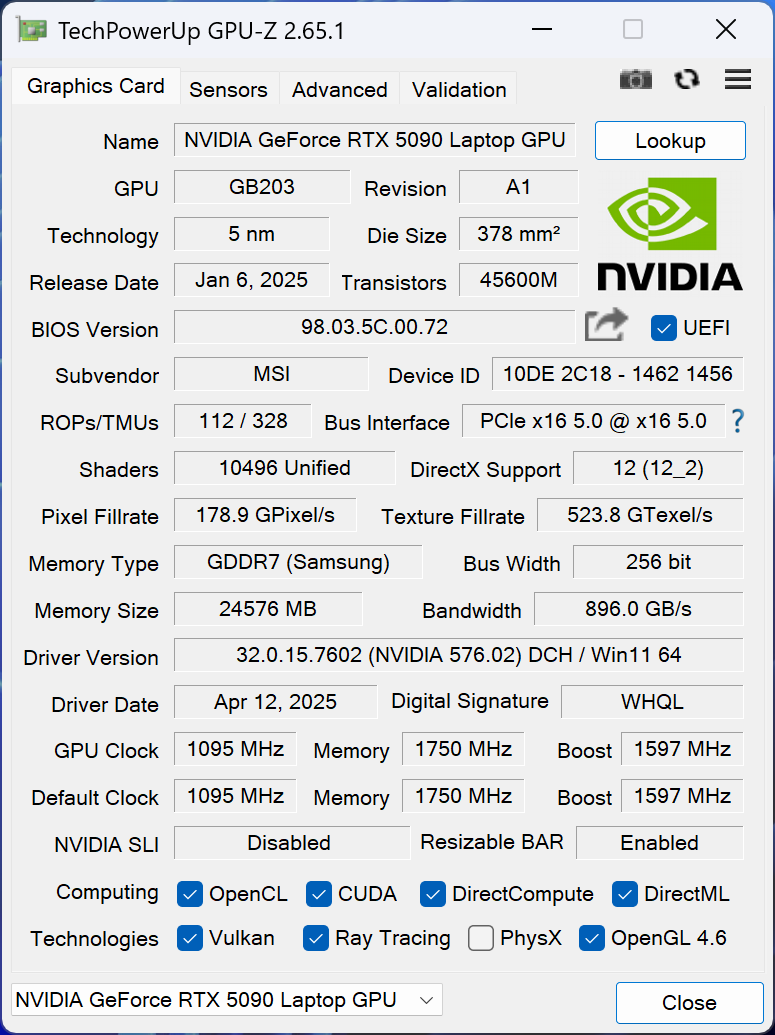
MSI’s Titan 18 laptops are decked out with the latest NVIDIA RTX 50 series, and the sample we got featured the top GeForce RTX 5090 GPU. This chip features 10496 CUDA cores, 328 TMUs, 112 ROPs, 82 RT Cores, and has a clock speed rated at 1095 MHz (base) and 1597 MHz (boost).
There’s also 64 MB of L2 cache on the chip. The GPU also gets a massive 24 GB VRAM capacity, which is featured across a 256-bit wide bus interface and runs the latest 28 Gbps GDDR7 modules for a total of 896 GB/s of bandwidth. In terms of compute power, the chip offers up to 32 TFLOPs of single-precision performance.
NVIDIA GeForce RTX 50 “Blackwell” Laptop GPU Lineup (Official):
| GPU Name | Cores | Memory | Bus | TGP |
|---|---|---|---|---|
| NVIDIA RTX 5090 | 10496 | 24 GB GDDR7 | 256-bit | 95-150W |
| NVIDIA RTX 5080 | 7680 | 16 GB GDDR7 | 256-bit | 80-150W |
| NVIDIA RTX 5070 Ti | 5888 | 12 GB GDDR7 | 192-bit | 60-115W |
| NVIDIA RTX 5070 | 4608 | 8 GB GDDR7 | 128-bit | 50-100W |
With the internals of the CPU covered, let’s talk about the rest of the specifications. First, we have the memory, which comes in the form of 64 GB of DDR5 capacity that can be upgraded up to 96 GB. These modules are rated to hit speeds of up to 6400 MT/s, and their timings are set at CL26-26-26-52-256-2T.
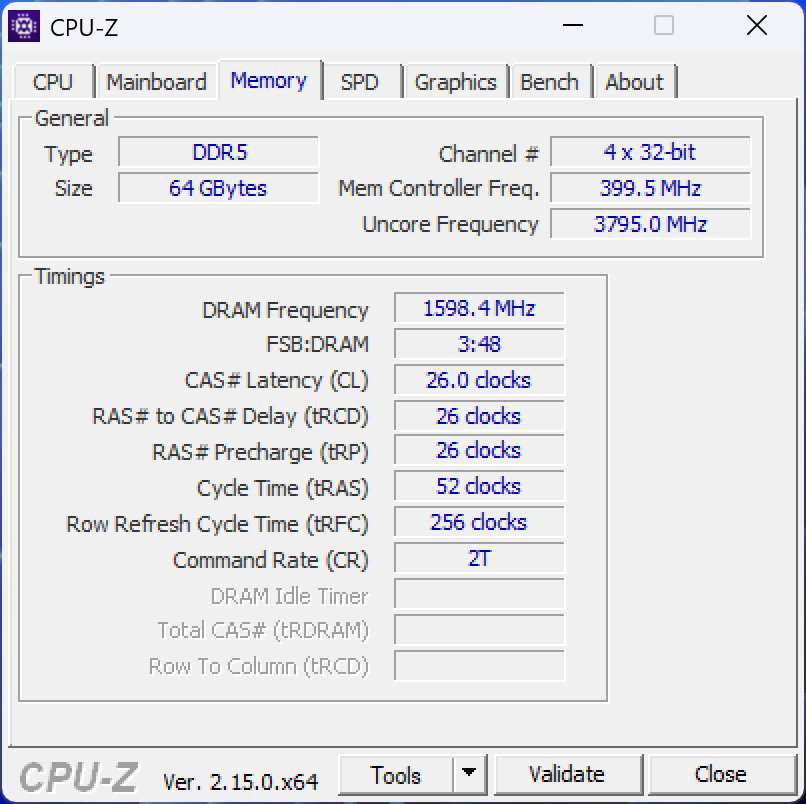
For storage, the MSI Titan 18 HX AI laptop is a juggernaut with its massive 6 TB capacity. These come in the form of a single Gen5 x4 and two Gen4 x4 devices, which are configured in RAID to offer up to 18,000 MB/s read speeds. In our tests, the Titan was able to hit almost 17,000 MB/s speeds. There’s also an additional PCIe Gen4 x4 slot, which can be configured with a fourth SSD.
Furthermore, the cooling solution of the MSI Titan 18 HX AI is extended to the Gen5 SSD, which uses a dedicated cooling pipe. This SSD, on its own, offers up to 12,000 MB/s read speeds, and the added cooling ensures that you don’t have to face significant thermal throttling since it can drop temps by an average of 8 °C.
Talking about the cooling solution on the MSI Titan 18 HX AI, you are getting 2 fans, 4 exhaust vents, a vapor chamber cooler which has a surface area of 76,840 mm2 and can provide up to 270W of cooling.

For display, you are getting an 18″ AU Optronics MiniLED panel, which is an IPS “16:10” screen with a maximum resolution of 3840×2400 and a maximum refresh rate of 120Hz configured on this PC. The panel is VESA DisplayHDR 1000 certified.
It also comes with a front-facing IR FHD (HDR) camera with 30fps@1080p capabilities, and there’s also 3D Noise Reduction+ technology on the laptop. Audio comes in the form of four 2W speakers and two 2W woofers.
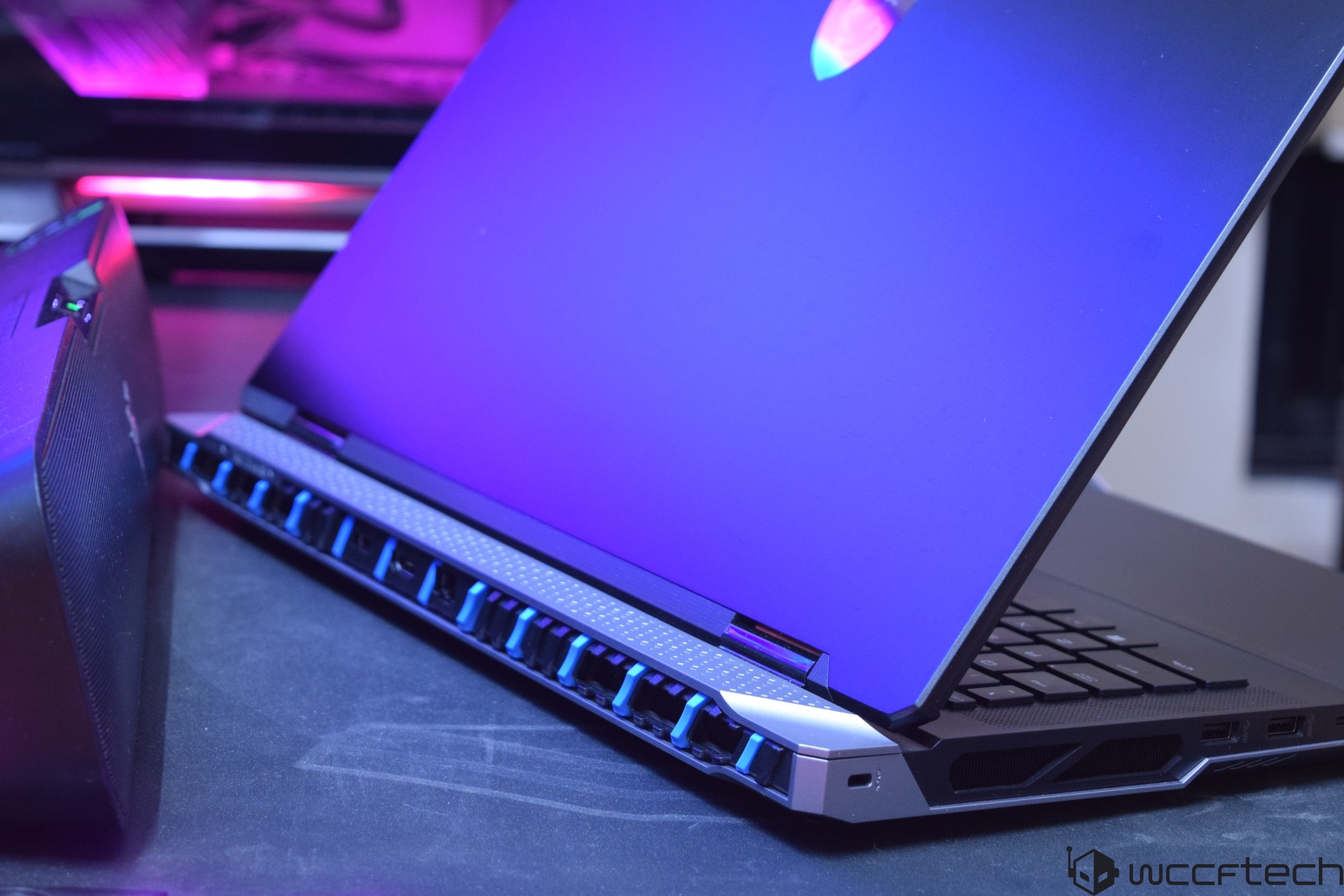
The keyboard is a 100% design that utilizes Cherry Mechanical Switches in a low-profile fashion and feels really good. The touchpad is an RGB-lit haptic design.
IO includes 2 Thunderbolt 5 ports (DisplayPort + Power Delivery 3.1) with up to 120 Gbps of total bandwidth, 3x USB 3.2 Gen2 Type-A ports, 1 full sized SD card (UHS-III), 1x audio combo jack, 1x Kensington Lock, 1x HDMI 2.1 (8K @60Hz or 4K @120Hz), a DC Jack and a single RJ45 port that is powered by a 2.5GbE LAN chip.
Wireless connectivity includes Killer BE Wi-Fi 7 and Bluetooth 5.4 functionality. The laptop is equipped with a 99.9Whr (4-Cell) battery and has a 400W PD adapter supplied with it. The variant we got weighs 3.6 kg and measures in at a massive 404×370.5×24-32.05mm.
You can also see the massive power brick below.

MSI Titan 18 HX AI Laptop – CPU Performance
We start by comparing the 3DMark CPU Profile tests, where the Intel Core Ultra 9 285HX more than doubles the multi-threading capabilities over the 285H, and also offers a 24% boost in single-thread performance since it can sustain its clock speeds much longer thanks to the higher power rating.
0
4000
8000
12000
16000
20000
24000
Following is how the platform performs in the AIDA64 Cache & Memory benchmark:

0
19007
38014
57021
76028
95035
114042
For Blender, we see the performance reach an impressive 3x rating over the Core Ultra 9 285H, and the minimum lead is rated at 2.4x, which is superb.
In CPU-Z, the Intel Core Ultra 9 285HX is almost as fast as the Core Ultra 9 285K Desktop CPU, which is rated at a much higher TDP. Versus the 285H, the HX offers a 98% lead in multi-threaded, and a 6.5% lead in single-core performance.
0
4000
8000
12000
16000
20000
24000
For Cinebench 2024, we are looking at an 11% lead in single-core and a 2.5x lead in multi-core perf versus the 285H.
In Geekbench 6, the lead drops down a bit with the single-core performance showing a 6.5% boost and multi-core showing a 39% boost over the 285H.
0
5000
10000
15000
20000
25000
30000
The Intel Core Ultra 9 285HX retains its lead throughout the UL Procyon Office suite.
0
2000
4000
6000
8000
10000
12000
Lastly, in WinRAR, we see a 2.35x boost in performance versus the standard 285H chip.
0
9000
18000
27000
36000
45000
54000
MSI Titan 18 HX AI Laptop – AI Synthetic Performance
For AI, we used all three portions of the MSI Titan 18 HX AI which are worth looking at and these include the CPU, the NPU and the discrete GPU:
0
4000
8000
12000
16000
20000
24000
0
10000
20000
30000
40000
50000
60000
0
5000
10000
15000
20000
25000
30000
In Geekbench AI, the CPU does well in the ONNX “CPU” benchmark while the NPU sits behind the 285H and the 258V due to its limited AI capacity. The NVIDIA GeForce RTX 5090 Laptop sits on a whole different level.
0
7000
14000
21000
28000
35000
42000
MSI Titan 18 HX AI Laptop – GPU Synthetic Performance
Now we are going to look at the GPU performance, and before we present to you the gaming numbers, we first have to see how the performance fares in synthetic benchmarks.
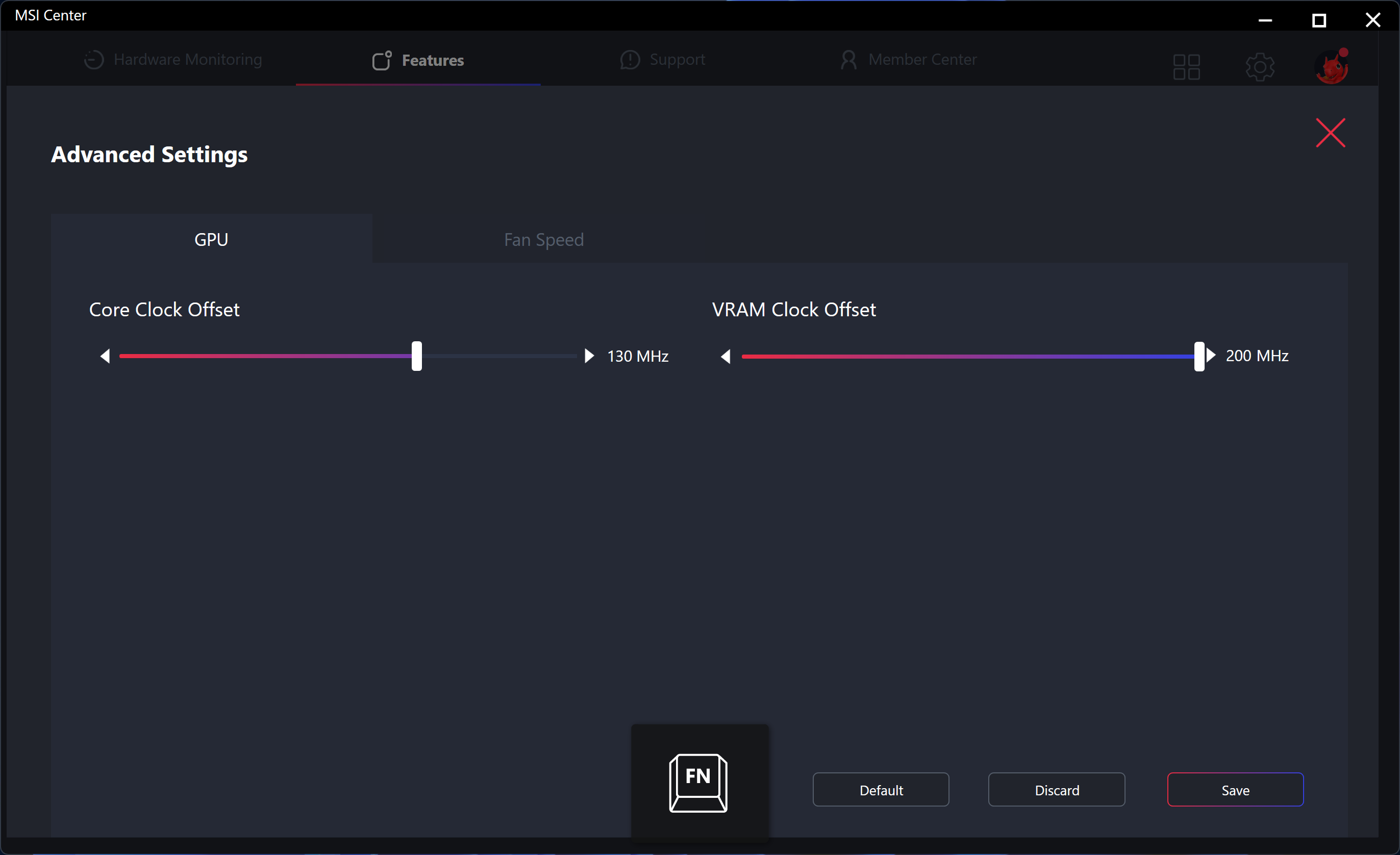
For these tests, we tried out a bit of overclocking that was available on the MSI Titan 18 HX AI laptop. The GPU is configured up to 175W, which can be accessed using the “Extreme Performance” profile,e and you also get core clock and VRAM clock tuning options within the “MSI Center” app. This allowed us to add +130 MHz to the GPU and +200 MHz to the VRAM clocks, leading to a nice overall boost.
In 3DMark Speed Way, the GeForce RTX 5090 Laptop GPU ends up only 9.2% slower than the RTX 4080 Desktop graphics card, which is quite an impressive showcase of how far laptop chips have come.
0
4000
8000
12000
16000
20000
24000

For 3DMark Steel Nomad, we see the GeForce RTX 5090 Laptop GPU ending up just 3.8% slower than the RTX 4080 Desktop.
0
2000
4000
6000
8000
10000
12000
In 3DMark Port Royal, the GeForce RTX 5090 Laptop GPU is just 8.6% slower than the 4080 Desktop graphics card.
0
5000
10000
15000
20000
25000
30000
As we get to more compute-intensive tests, we see the desktop graphics cards taking a double-digit lead, with the 5090 Laptop being 11.5% slower than the last-gen 80 option.
0
7000
14000
21000
28000
35000
42000
For Fire Strike, Intel offers great performance even on DX11 APIs, which is a good showcase, as many games still run on DX11.
0
13334
26668
40002
53336
66670
80004

Lastly, we have 3DMark Night Raid, which is designed for entry-level PCs, and as such, the scaling seems to be a bit problematic here for the RTX 5090 Laptop versus what we have seen in the prior benchmarks.
0
32768
65536
98304
131072
163840
196608
MSI Titan 18 HX AI Laptop – HD Gaming Performance
With the synthetic performance out of the way, we can start taking a look at pure gaming numbers, and we start off our testing spree with Black Myth Wukong at 4K and Cinematic Quality.

At native resolution, you will only get 26 FPS, and even with DLSS4 set to 2x mode, you get 48 FPS, which is a bit less than desirable. You will have to go for the 4x MFG option to get a smoother result with over 80 FPS.

In Cyberpunk 2077, we set everything to max details and used the Path Tracing (Overdrive) mode at 4K resolution. The GPU managed just 28.14 FPS at the native resolution, while using DLSS4 at 2x mode offered us 51.13 FPS. It was only with DLSS4 4x MFG that we were able to get a solid 93 FPS.

Dragon Age: The Veilguard is another new title that supports DLSS4, and we were able to get 44.4 FPS with everything maxed out at 4K native resolution. With DLSS4 at 2x frame-gen, we got 88.7 & with DLSS4 at 4x frame-gen, we got a stunning 163.7 FPS.

In Forza Horizon 5, we ran the game with everything maxed out at 4K resolution and with DLAA (native AA) and frame-gen enabled, we got 126 FPS. Using the DLSS Quality mode gave us 138 FPS, but it’s better to stick with DLAA for higher graphics fidelity.

F1 24 had no problem running the game at the native resolution with 60+ FPS, but with DLSS Quality and no frame-gen, we managed 92 FPS, while enabling Frame-gen gave us 125 FPS on NVIDIA’s RTX 5090 laptop GPU.

In Horizon Zero Dawn at the “Ultimate Quality” preset, we got 100 FPS at the native 4K resolution and 134 FPS with DLSS set to quality mode.

Indiana Jones & The Great Circle is a fully path-traced title and as such, it is one of the most graphics-intensive titles on the market right now. We got just 17.4 FPS at the native resolution with everything cranked out, and it was only with DLSS4 at 4X Quality mode that we got a reasonable 62.1 FPS in the game at 4K.
Metro Exodus at Extreme Quality and RT Ultra preset gave us 43.89 FPS on native and 66.80 FPS with DLSS Quality mode.

STALKER 2, being the visually intensive FPS that it is, only gave us 37.4 FPS at the native 4K resolution of 3840×2160, while enabling DLSS4 provided 62.6 FPS at 2x and 116.4 FPS on average at 4x modes.

Lastly, The Callisto Protocol ran great at native 4K resolution with everything maxed out, offering us an incredible 140.98 FPS. Enabling the FSR2 Quality preset didn’t lead to any performance gain, which could be a bug.
MSI Titan 18 HX AI Laptop – Thermals, Power & Battery
A major factor of today’s laptops is their power consumption, and in that regard, the Intel Core Ultra 9 285HX CPU has a higher out-of-the-box power profile set at 55W at PL1 and up to 220W with the Extreme Performance profile.
The higher power consumption on the Intel Arrow Lake laptop also leads to higher temperatures. We saw the Intel Core Ultra 9 285HX reach a peak of 101C and run at a warm 80- 85C during most of the workloads.
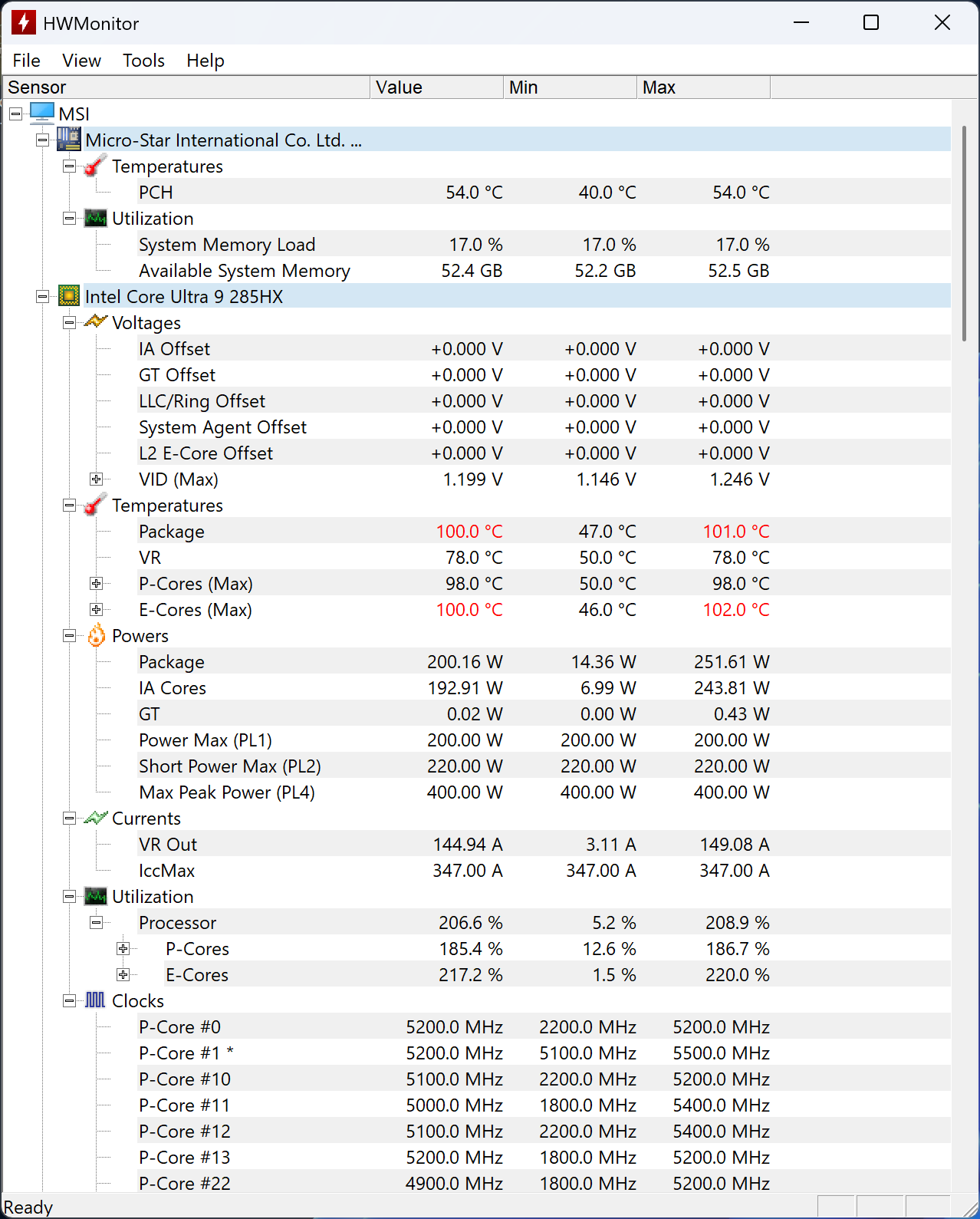
As for battery timings, well, despite its larger 99.9 WhR capacity, the MSI Titan 18 HX AI has a lot of hardware to fee,d and that results in around 2 hours of productivity use and around 1 hour worth of gaming time when running this beast on battery. This being a desktop-replacement needs you to have the laptop plugged in to a wall all the time for an optimal experience.
Conclusion – Earth-Shattering Laptop Performance
The MSI Titan 18 HX AI is a juggernaut mobile platform, featuring ground-breaking performance and the latest IO. Starting with the two main components of the MSI Titan 18 HX AI, we have the Intel Core Ultra 9 285HX and the NVIDIA GeForce RTX 5090.
The Core Ultra 9 285HX is a continuation of the high-end gaming/workstation CPUs from Intel that are built upon the same foundations as the desktop chips, and MSI takes them to the next level by offering an unprecedented 200W CPU TDP support, which the Titan 18 can fully sustain around 180W in CPU-intensive workloads. This is a true desktop-class chip for mobile platforms, and with 24 cores and 5.5 GHz clocks, you are going to get amazing single and multi-core performance.
The downside of this CPU is that, just like the Arrow Lake Desktop parts, the 14th Gen Raptor Lake HX SKUs may still offer the best gaming performance when paired with higher-end GPUs like the RTX 5090 or RTX 5080 (Laptop). But in terms of multi-threaded efficiency, Arrow Lake-HX takes the cake with strong out-of-the-box performance.
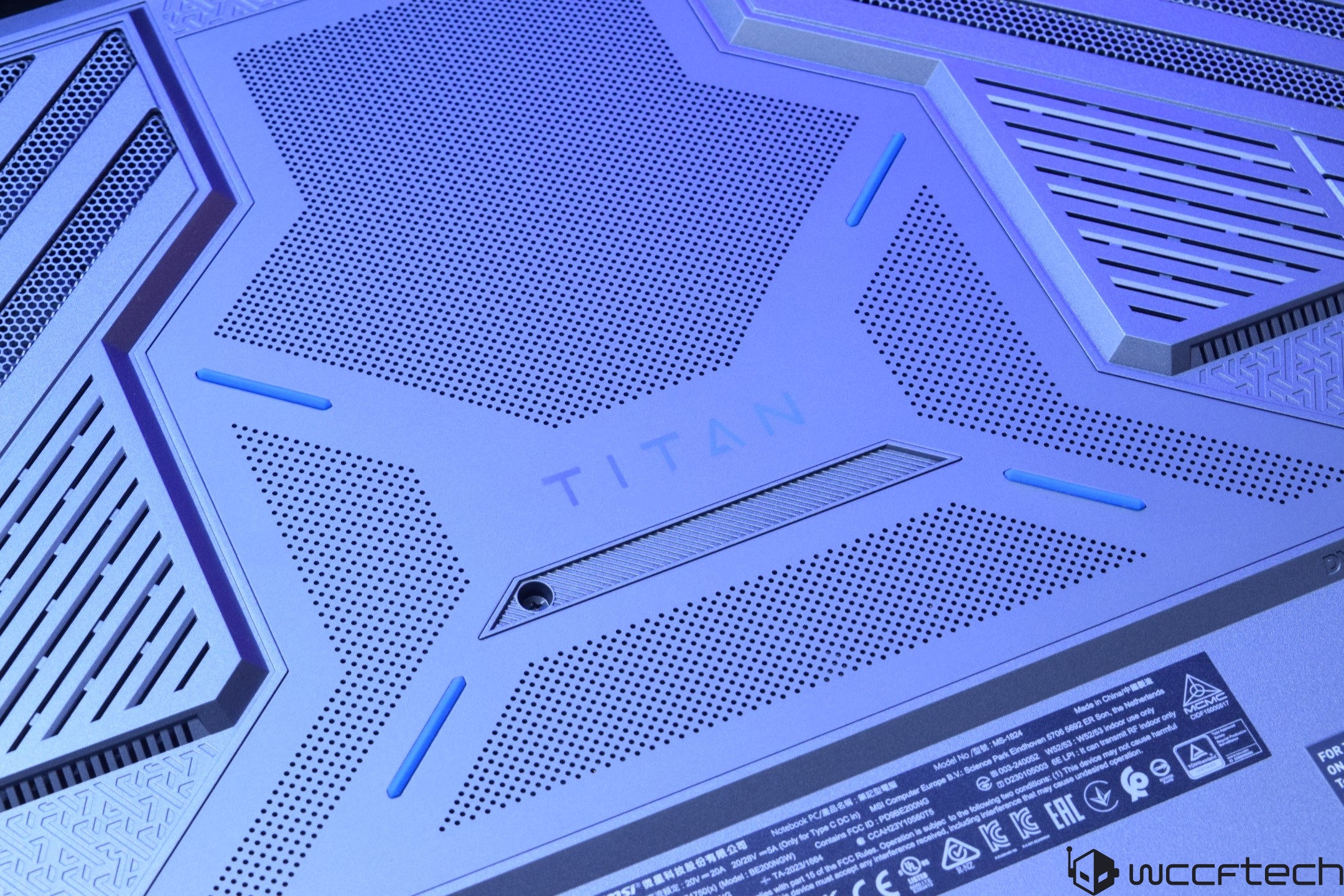
For the GPU, the NVIDIA GeForce RTX 5090 Laptop is a beast. It’s the only gaming SKU for mobile to carry a massive 24 GB VRAM, that too with GDDR7 memory and over 10K cores. On paper, the RTX 5090 is very similar to the RTX 5080 and RTX 4080 Desktop. The RTX 5090 Laptop GPU does end up close to the RTX 4080 Desktop graphics card in synthetic workloads, & with Blackwell architecture, it offers superb AI capabilities as reflected in the benchmarks.
In terms of gaming performance, you are going to end up closer to the RTX 4080 Desktop than an RTX 4090 or RTX 5080, with the latter being a good 20-30% ahead. Even RTX 4080 Desktop performance is superb on a mobile platform, and with a TGP supported of up to 175W, you get some big gaming numbers.
You can expect to run all AAA games at maxed details and with DLSS4 support, with MFG (Multi-Frame Generation), you get gorgeous visuals at smooth 60+ FPS in the latest path-traced titles. There are also several AAA games that you will be able to run at 4K natively, and with more Blackwell enhancements coming soon, expect more performance upgrades in future titles.
After these, let’s talk about the memory and storage capabilities. You get two SO-DIMM slots, which can be configured with DDR5-6400 memory up to 96 GB capacities. We got the 64 GB capacity, and that’s an ample amount, but we see the use of this laptop outside of just gaming space, so those who might use this as a mobile workstation have the option to go for a higher capacity. Storage is strong with four M.2 slots, of which one is Gen5x4. The laptop is already equipped with 6 TB of SSD storage space, configured in RAID, for up to 18,000 MB/s speeds. IO is also decent with USB 3.2 Gen2 and Thunderbolt 5 Type-C ports. There’s also WIFI7, 2.5 GbE LAN, and Bluetooth 5.4.
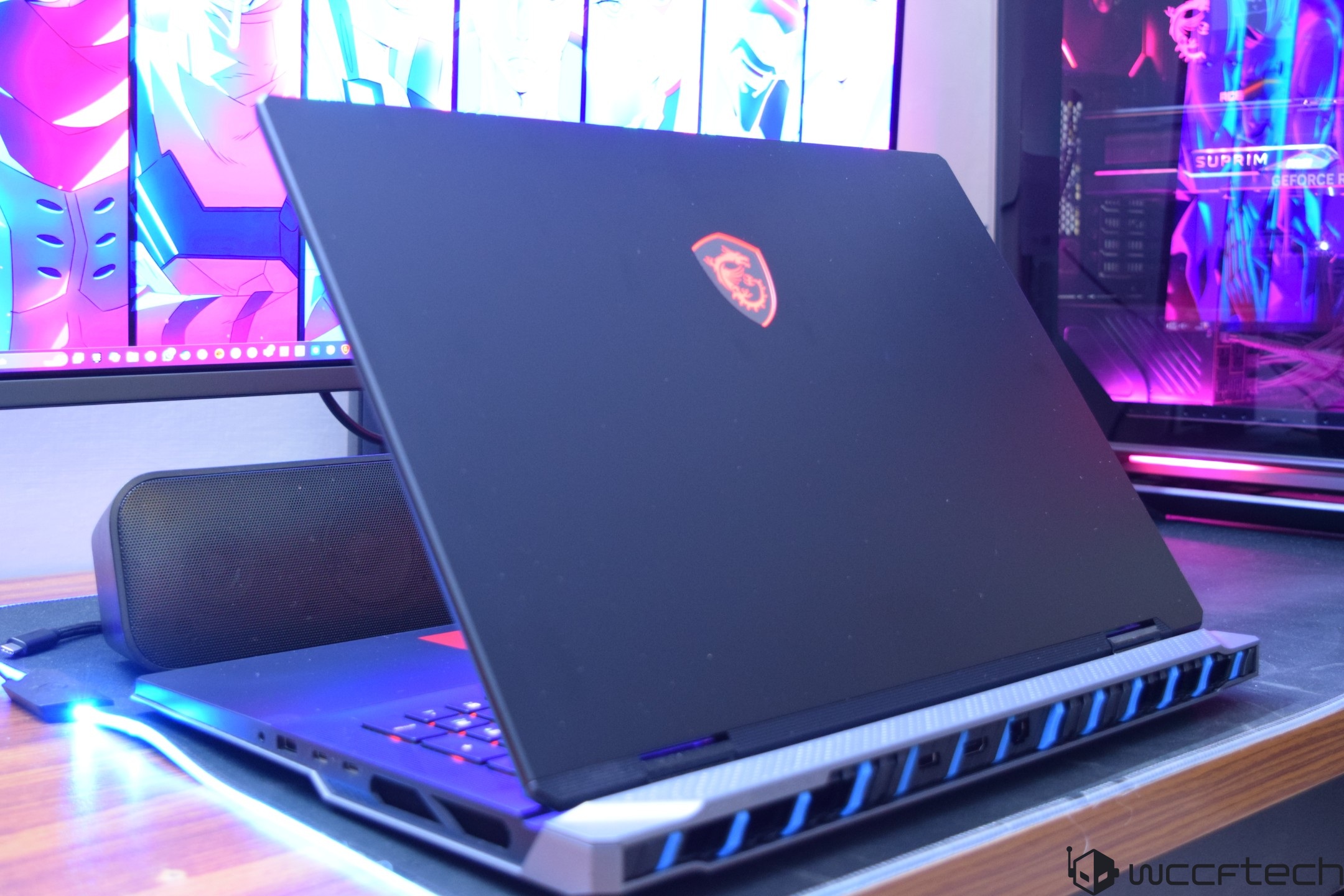
Power and battery timings are a concern, though it should be expected from hardware like this. You will see the battery time end up around 2 hours in regular work and around 1 hour or less in gaming. The only option for longer uses is to keep the laptop plugged into the wall. Some might see it as defeating the purpose of a mobile platform, but unlike gaming desktops, this is a one-stop mobile solution with everything next to you. Sure, it isn’t easy to carry with its over 3 kg weight and massive proportions, but it is still much more convenient to move than moving your entire PC.
The display on the MSI Titan 18 HX AI isn’t glossy but instead, a matte finish which uses an AUO Mini LED rated at up to 3840×2400 with a 120Hz refresh rate, and DisplayHDR 1000 certification. The Mini LED sure feels awesome, but I would have preferred a glossy option on a high-end product like this.
Things I liked about the MSI Titan 18 HX AI Laptop:
- Up To 24 CPU Cores on Intel Core Ultra 9 285HX
- Almost as fast as a desktop 285K while being more efficient
- Extremely Fast NVIDIA GeForce RTX 5090 GPU With 24 GB VRAM
- DLSS4, MFG, Superb RT, and Blackwell AI capabilities infused
- 6 TB of SSD Storage Space (Including Gen 5) rated at 18,000 MB/s
- Four M.2 SSD slots (one of which is free to use)
- 18″ Massive 4K Mini LED With DisplayHDR 1000 & 120Hz support
- Good RGB-Lit Touchpad and Keyboard
- Dual Thunderbolt 5 ports
- 2.5GbE LAN & WIFI7 Support
- Vapor Chamber-based cooling solution
The keyboard and mouse are also decent. The keyboard uses slim-profile Cherry Mechanical keys and is designed by SteelSeries. It does have a few awkward key positions, such as the FN key on the right instead of the left, making it uneasy for use when typing with both hands. The haptic touchpad is also nice, but it can feel a bit flimsy. The RGB-Lit background is nice, though.
Things that aren’t great:
- High Power Draw in Extreme Profile
- Very High Temperatures on CPU (101C)
- Loud Noise
- Not the best keyboard/touchpad experience
- Heavy and Big
- Only useful when plugged in
- Very high price
In terms of pricing, the MSI Titan 18 HX AI has Titan-like pricing, starting at $6600 US, and currently, it is out of stock at major retailers. The few listings that we were able to find are listed at $7300 US but considering its niche positioning, it will be hard to come by and will be priced very high based on availability.
Ever since Intel and AMD made it a goal to deliver desktop-class performance on laptops, we have seen the laptop segment change rapidly, infusing unseen levels of performance that were previously unimaginable. There used to be a difference on the hardware side, especially in terms of CPUs, but that has gotten smaller and reached a point where these HX chips can deliver desktop-like performance, and pair that with a high-end laptop GPU, you get a phenomenal mobile machine.
So, based on my experience with the MSI Titan 18 HX AI, I would say that this laptop is the most powerful mobile workstation/gaming PC that I have ever tested. You aren’t being constrained at any level with the Titan 18, you get the full 285HX and 5090 laptop experience, fully maxed out to their fullest potential. MSI has built the ultimate laptop with its Titan 18 HX AI, and we can expect more options coming in the next few months that further elevate the enthusiast-grade laptop experience. The Titan 18 HX AI from MSI is the epitome of gaming and workstation laptops.

VIA: wccftech.com







